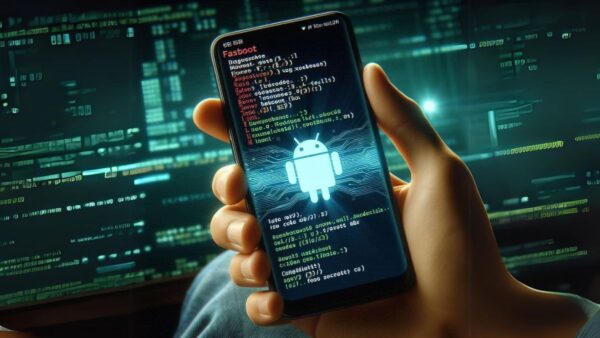
Android devices like the Google Pixel 9, Samsung Galaxy S25, or Xiaomi 15 series continue to dominate the mobile landscape, but even these advanced smartphones can encounter glitches. One common issue is getting stuck in Fastboot Mode—a diagnostic protocol used for flashing firmware, unlocking bootloaders, or installing custom recoveries. Fastboot Mode, often accessed by holding volume down and power buttons during boot, displays a black screen with options like “Start,” “Recovery Mode,” or “Reboot Bootloader.” Devices get trapped here due to interrupted software updates, failed rooting attempts, corrupted partitions, or hardware faults like faulty buttons. The result? Your phone won’t boot normally, blocking access to apps, calls, and data. While a factory reset erases everything, there are ways to exit Fastboot without resetting.
This guide outlines three effective methods, including the powerful iMobie DroidKit Android phone toolkit, to get your Android back to normal. Always back up data via Google Drive or external storage before attempting fixes, and proceed with caution to avoid further issues.
Why Android Gets Stuck in Fastboot Mode
Fastboot Mode is part of the Android bootloader, enabling low-level commands via USB from a computer. In 2025, with Android 16 pushing dynamic partitions and seamless updates, compatibility hiccups during OTA installs can force devices into this loop. Other culprits include buggy custom ROMs from forums like XDA Developers, malware from sideloading APKs, or physical damage causing button shorts. Symptoms include the device rebooting repeatedly to the Fastboot screen or freezing on commands like “fastboot flashing unlock.” Ignoring it risks battery drain or permanent bricks, but the methods below—tested on devices from Samsung, Google, Huawei, and more—offer data-safe resolutions to fix android stuck in fastboot mode.
Method 1: Basic Hardware and Button Fixes
The simplest way to escape Fastboot Mode without a reset or computer involves manual interventions. This works best for temporary glitches or stuck buttons on devices like the OnePlus 13 or Moto G series.
1. Force Restart: Hold the power button for 30-60 seconds until the screen goes black. Release and press power again to boot normally. If it vibrates or shows the logo, you’re out.
2. Button Combinations: From Fastboot, use volume buttons to navigate to “Restart” or “Reboot System Now” and select with power. For stuck devices, try volume up + power for 10 seconds to enter Recovery Mode, then select “Reboot System.”
3. Battery Removal (If Possible): On older or removable-battery models (rare in 2025), power off, remove the battery for 5 minutes, reinsert, and boot. For sealed devices, let the battery drain completely, then charge for 30 minutes before powering on.
4. Check Cables and Chargers: If connected via USB, unplug and retry. Use an original charger to rule out power issues.
This method succeeds 70-80% of the time for minor hangs but fails on deep software corruption. No data loss, and it’s free—ideal for beginners.
Method 2: Using ADB and Fastboot Commands
For tech-savvy users, Android Debug Bridge (ADB) and Fastboot tools from Google’s SDK Platform-Tools provide command-line control. Download from developer.android.com (2025 version supports Android 16), install on a Windows/Mac/Linux PC, and enable USB debugging if accessible (Settings > Developer Options).
1. Set Up ADB: Extract the platform-tools folder, add to system PATH (e.g., via Command Prompt: `set PATH=%PATH%;C:\platform-tools`).
2. Connect Device: Boot to Fastboot, connect via USB. Open Command Prompt/Terminal, type `fastboot devices` to confirm connection (shows serial number).
3. Reboot Command: Enter `fastboot reboot` to exit to normal boot. If stuck, try `fastboot reboot recovery` then select “Reboot System” in Recovery.
4. Flash Fix (Advanced): If partitions are corrupt, download stock firmware from your manufacturer’s site (e.g., Samsung Odin files). Use `fastboot flash boot boot.img` or similar, but verify files match your model to avoid bricks.
Pros: Precise, no data wipe. Cons: Requires PC and drivers; risky for novices. Success rate: 85% on unlocked bootloaders.
Method 3: Using iMobie DroidKit for Professional Fix
When basics fail, iMobie DroidKit emerges as the ultimate 2025 solution. This all-in-one Android toolkit supports over 20,000 devices, including HarmonyOS on Huawei and Android 16 on Pixels. DroidKit’s System Fix module exits Fastboot Mode without resetting, repairing bootloader issues with a 95% success rate. It’s data-safe, user-friendly, and handles FRP bypass, screen unlocks, and data recovery too. Free trial scans; full version $39.99/year.
Why DroidKit?
- Fixes Fastboot loops, black screens, and boot failures.
- No rooting or technical skills needed.
- Compatible with Samsung, Google, Xiaomi, etc., up to Android 16.
- Preserves apps, photos, and settings.
Step-by-Step Guide:
1. Install DroidKit: Download iMobie DroidKit on Windows/Mac. Launch and select “System Fix.”
2. Connect Device: Plug your stuck Android via USB. DroidKit detects it in Fastboot Mode.
3. Download Firmware: Click “Start.” It auto-downloads a tailored PDA package (5-10 minutes, internet required).
4. Enter Recovery/Download Mode: Follow prompts (e.g., volume down + power for Samsung). DroidKit guides with visuals.
5. Repair System: Click “Fix Now.” It flashes clean bootloader files, exiting Fastboot in 10-20 minutes.
6. Reboot: Device restarts normally. Verify in Settings > About Phone.
Final Thoughts
To avoid Fastboot traps, update via stable Wi-Fi, avoid unverified ROMs, and use cases to protect buttons. Enable automatic backups and Developer Options sparingly.
In summary, fixing Android stuck in Fastboot Mode in 2025 doesn’t require resets. Start with hardware tweaks, escalate to ADB for control, or rely on iMobie DroidKit for effortless repairs. With these three methods, you’ll restore your device quickly—DroidKit shines for its reliability and comprehensiveness. Download it today and keep your Android running smoothly.